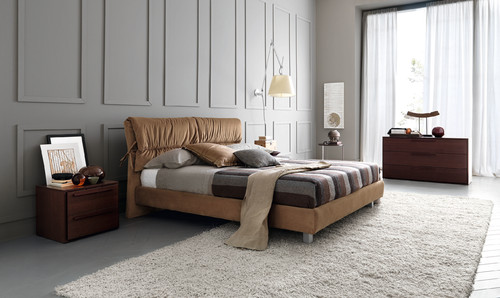- No Obligations
- Stop Paying Too Much For Your Contractor
- No Spam Calling
- Screened & ID Checked Contractors only!
Wainscoting Ideas and What You’ll Need to Get the Job Down
1
 Wainscoting Ideas and What You’ll Need to Get the Job Down
earlyexperts.net
Wainscoting Ideas and What You’ll Need to Get the Job Down
earlyexperts.net
Nothing adds character to a room quite like wainscoting. And while it may look elegant and expensive, you can make this design dream a reality in your own home for a relatively low cost.
In order for that to happen, though, you will need the right materials and a vision! Wainscoting is a vague, all encompassing design term, and there are many styles..
In this article we will outline our favorite of these wainscoting designs so that you can determine which makes the most sense for your home and what you’ll need to bring it to life.
Raised Panel

The most traditional wainscoting style is the raised panel. This is a wall design that goes back to colonial days, where the raise of the panel was created through a beveled edge of each sections.
There are six sections to a raised panel design:
- Cap molding
- Cove molding
- Top rail
- Stile
- Raised panel
- Bottom rail
Certainly that traditional mold can be broken and adopted to meet the style needs of any room in your own house. In some cases, when ceiling heights vary, a center rail is added to create two rows of panels. The bottom rail often acts as the baseboard molding.
Flat Panel

Flat panels have clean cut lines starting from the floor with the baseboard. This baseboard is often comprised of shoe and cap moldings. Then comes the bottom rail, the stiles and panels, and the top rail.
The stiles and panels, which comprise most of the surface area of the design, fit together via tongue and groove edges.
The whole design is capped with a chair rail. Another means of creating flat panel that tends to be less labor intensive is to hang sheet material first, then incorporate the various moldings over the top.
Overlay Panel

Overlaid panels are meant to appear as raised panel wainscoting. The different here is the overlaid panel process allows for the DIY-er to create more elaborate designs.
To create this look, first center the solid wood overlay in the middle of the rails and stiles. Apply ogee molding to make the recess of the panel even more dramatic.
The beauty of the overlay panel is it can be applied directly to the wall for a quick build.
Board and Batten

The board and batten panel is a type of flat panel featuring vertical battens. The combination of these two materials create an elegance and simplicity characteristic of the Craftsman style.
Like all things Craftsman, the battens had a practical use originally, meant to conceal seams between boards. Nowadays they are strictly decorative.
With batten, you can go extremely high, up to six feet in some cases. To cap the batten, use a plate rail rather than a chair rail. This creates a sort of ledge for ornamental decorations.
Beadboard

For a more custom, and slightly more simplistic look, beadboard can be a great wall covering. It is very cottage style, great for kitchens, bathrooms, and more.
The best thing about beadboard is the ability to dress it up. Use some flat or raised panels intermittently to create design patterns.
Non-wood Materials
Outside of the traditional wainscoting materials listed in the various style outlines above, there are also some non-wood materials worth mentioning.
PVC
Nearly all wainscoting elements also come in PVC plastic for a finished, easy to clean look that you will never have to worry about.
Embossed Metal
If you are really looking to make you mark at home, various metals can be worked into a wainscotting design to create a beautiful and unique look. Stamped tin that is often used on ceilings, for example, is easily fastened to walls.
Ceramic Tile
This is not as non-traditional as some of the other materials mentioned. In fact, when it comes to bathrooms, ceramic tile is as old and timeless as wood in its application as a wall covering. What is new, is tile beadboard. This is just another way to mimic a specific look with a more durable material.
Embossed MDF/Drywall
These are essentially premade, preassembled, and synthetic wainscotting styles that can be fastened to your walls in nearly one piece. The advantage to either of these options is they will not cast shadow lines like wood stiles, rails, and panels will. There is also a certain level of customization and ease that is desirable.
Conclusion
So there you have it: the ultimate list of wainscotting design styles and everything you would need to make them work. When considering wall coverings be conscious of your home style or the style you wish to achieve within your home. Each wainscotting design is specific to a type of residential architecture or time period and reflects that style in a dramatic way.
In terms of materials, anything resin is good for the modern home. These wall coverings are easy to clean, long lasting, and don’t need to be painted. That said, they lack the Craftsman quality of wood.
Regardless of these factors, wallcoverings of any kind are a sure fire way to class up your favorite room. Follow the guide above and you’ll have all the information you’ll need to get started.











